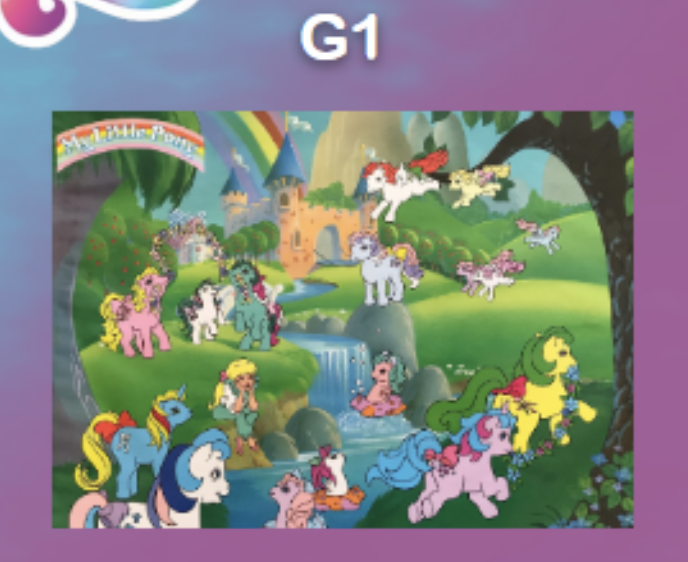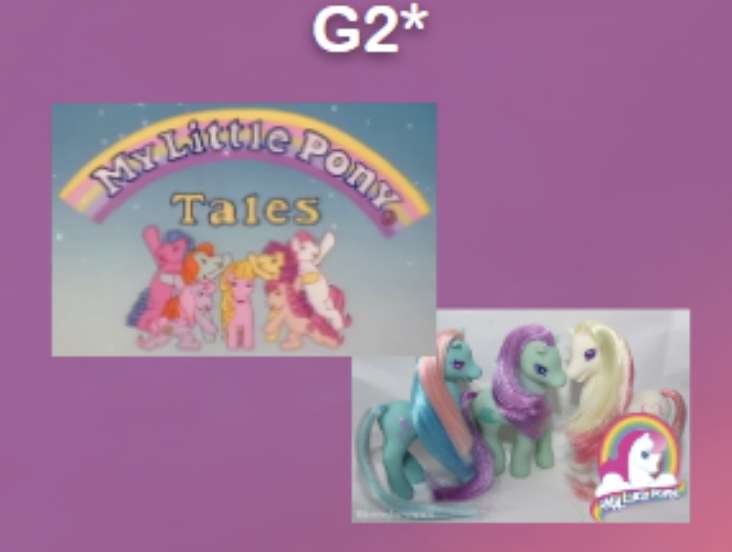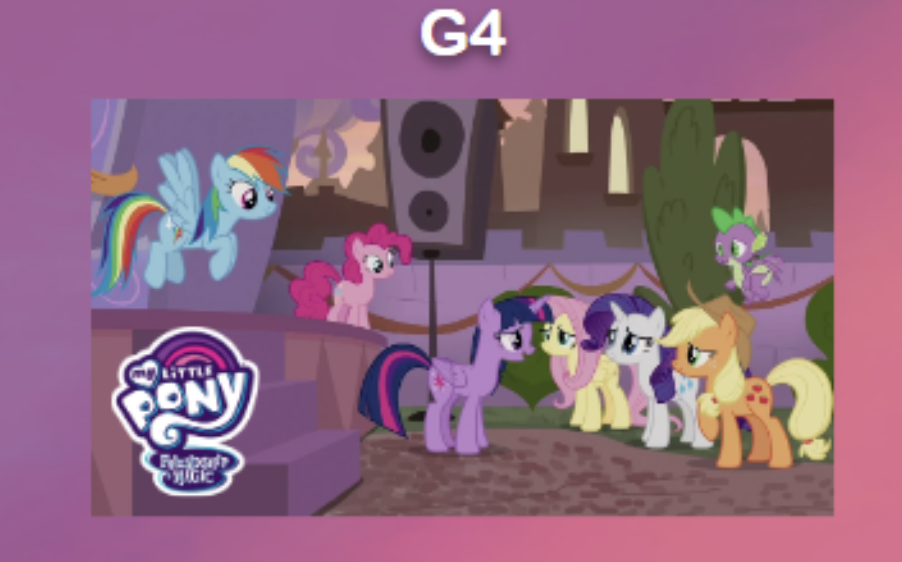
Generation 1 (G1)(1982-1992):

This generation is known for its wide variety of ponies with Ponyland as a magical place filled with both good and evil forces. Ponies were always in danger of being enslaved, changed into beings of darkness, or banished from the land, and so constantly fought against the evil power. However, they always won.
Generation 2 (G2) (1997-1999):

It was launched under the Friendship Garden line but was not long-lived in the U.S. because of poor sales. It was more popular, however, in Western Europe. G2 ponies had been redesigned, streamlined bodies with jewel eyes, turnable heads, and longer legs. The majority were Earth Ponies and some with clip-on wings.
Generation 3 (G3) (2003-2009):

The target audience of G3 was a younger audience compared to the previous two. Quite the opposite of the adventure-filled years of G1, G3's animated movies depicted Ponyville as a bright, conflict-free utopia where problems were typically light, centering on baking failures or party planning.
Generation 4 (G4) (2010-2021):

This generation introduced a new setting, Equestria, and a cast of characters: Twilight Sparkle, Rainbow Dash, Pinkie Pie, Applejack, Rarity, Fluttershy, and Spike. The accompanying animated series, My Little Pony: Friendship Is Magic, included both adventure elements from G1 as well as the lighthearted atmosphere of G3, featuring dangerous situations and everyday challenges. The show's success resulted in the rise of dedicated fan communities among adults and media.
Generation 5 (2021 - present):

G5 was launched with a CGI-animated film, My Little Pony: A New Generation, followed by a Netflix series. The story takes place in Equestria where ponies live separately, and follow main characters: Sunny Starscout, Izzy Moonbow, Hitch Trailblazer, Pipp Petals, and Zipp Storm. The series embraces diversity and inclusion while still maintaining slight connections to G4.